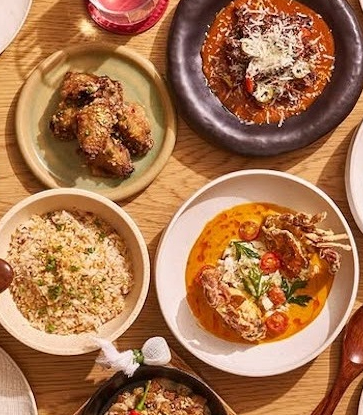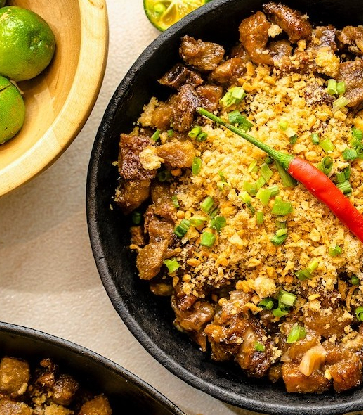Fast forward nearly 60 years later, and the humble pushcart has evolved to become a large business corporation, with 16 outlets in coffee shops and shopping malls. These days, besides chwee kueh (steamed rice cakes topped with preserved radish), Jian Bo Shui Kueh has also expanded its repertoire to include items such as nyonya dumplings, png kueh and steamed buns.
Leading the charge
Helming this change in direction is third-generation owner Eric Ang, who took over the business from his parents when he was 20 years old. Says the now 38-year-old Ang: "I have always been interested in food, although ironically I didn't eat a lot of chwee kueh growing up! (laughs) My intention when I took over was to not let this local dish die out; I want the next generation to know how chwee kueh looks and tastes like."

To Ang, the mark of a good chwee kueh is one where the steamed cake does not stick to your teeth. "When you take the first bite, the kueh cannot stick to your teeth. Most people do chwee kueh that is soft, but if it ends up too mushy, it will definitely stick to your teeth. That is a no no for us."
Yet, keeping this standard up can be challenging as the rice flour used never yields the same result — even if it is the same brand and exact measurements. Years of experience means the Ang family can tweak and make adjustments accordingly, sometimes adding more water, or increasing the length of time the cakes are steamed. Occasionally, the batter has to be stirred longer as well so as to achieve that coveted firm texture.
Chilli and the preserved radish topping are also important when it comes to a good chwee kueh. Here, simple ingredients such as onions and chillies are carefully picked and checked for quality. "My father handpicks the shrimps too. Every time we get a new batch he will look through them and pick out the small ones which we won't use for the topping," says Ang.
One adjustment he has made to this age-old recipe, though, is to replace the use of pork lard with vegetable oil. "Everyone is more health conscious these days, so we decided to adjust the amount of oil we use and find a healthier alternative instead," says Ang.

Every morning, the rice cakes are steamed in a central kitchen in Admiralty, and the chilli and chye poh (preserved radish) prepared. The kueh is left to chill in the afternoon, then delivered to all 15 outlets each night.
With 16 outlets island-wide, keeping standards consistent is a challenge for Ang. Together with his parents, they make sure to check in on outlets frequently, as well as spend more time at new outlets to train the staff.
More recently, Ang has also looked into expanding into opening standalone kiosks in air-conditioned shopping malls to cater to the younger crowd, whom he observes prefer hanging out there rather than in hawker centres. "One of the greatest challenges we face is manpower," says Ang. "Rent is much higher, too, which makes returns on these kiosks slower." Currently, he has a standalone kiosk in Compass One Mall, and plans to open one more in Seletar Mall next year.
A peek at the future
When asked to address the common perception that hawker stalls tend to lose their authenticity once they branch out into malls, Ang says: "I used to think hawker stalls were the only way to be authentic too - but now I don’t think so. Even aunties and uncles now want to go to NTUC to buy vegetables! They might go to the wet market for fish and meat, but that's just once or twice a week now. What people are looking for these days is also convenience. I'm sure an aunty or uncle would rather go to the NTUC nearer to their house."
As the brand looks towards building itself up for the future, Ang hopes that his son will take over the business some day. Yet, he is also certain that Jian Bo Shui Kueh needs to become less of a family business, and more of a corporate company that can run on its own someday. "At the end of the day, the business has to be able to run even if there's no family member to take over. What's most important is about preserving this dish, chwee kueh, for future generations."






















